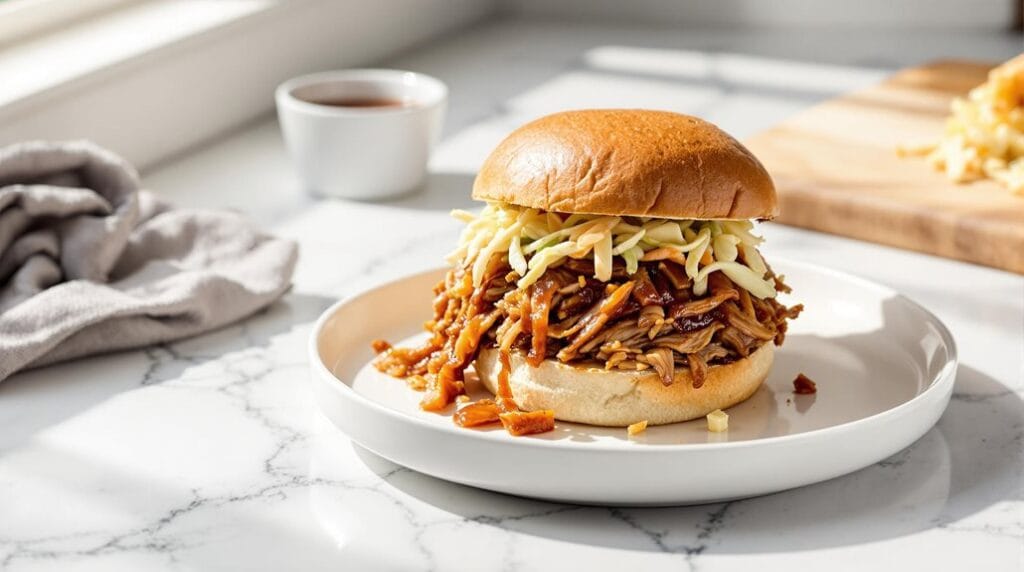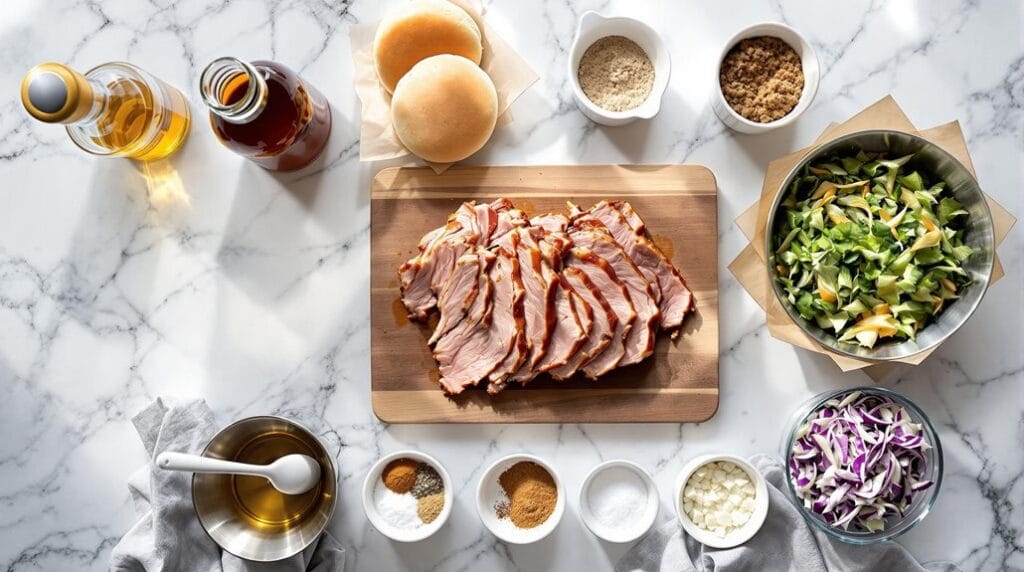Servings 4
- Amount Per Serving
- % Daily Value *
- Total Fat 30.52g47%
- Saturated Fat 10g50%
- Trans Fat 0.01g
- Cholesterol 107.1mg36%
- Sodium 714.29mg30%
- Potassium 658.25mg19%
- Total Carbohydrate 44.87g15%
- Dietary Fiber 1.84g8%
- Sugars 21.35g
- Protein 30.84g62%
- Vitamin A 38.09 IU
- Vitamin C 4.17 mg
- Calcium 113.59 mg
- Iron 3.62 mg
- Vitamin D 2.54 IU
- Vitamin E 0.94 IU
- Vitamin K 14.46 mcg
- Thiamin 1.4 mg
- Riboflavin 0.57 mg
- Niacin 7.9 mg
- Vitamin B6 0.62 mg
- Folate 27.38 mcg
- Vitamin B12 1.19 mcg
- Phosphorus 336.42 mg
- Magnesium 47.3 mg
- Zinc 4.53 mg
* Percent Daily Values are based on a 2,000 calorie diet. Your daily value may be higher or lower depending on your calorie needs.
Note
For extra flavour, marinate the pork in the sauce mixture for 2-4 hours before cooking.
If the sauce seems too thin after cooking, remove the meat and use the Sear/Sauté function to reduce the liquid for 2-3 minutes.
For larger portions, the recipe can be doubled but may require additional cooking time.
Sweet Tangy Sauce Drips
The sauce symphony creates an irresistible drip factor that's central to this sandwich's appeal.
You'll notice that the sweet and tangy BBQ sauce doesn't just sit there - it mingles with the meat's natural juices, creating rivulets of flavour that'll have you reaching for extra napkins. Don't fight it; that's exactly what you want in a proper pulled pork sandwich.
When you're assembling your sandwich, you'll want to let the sauce work its magic in layers.
Start by tossing the pulled pork with the warm sauce, then let it rest for a minute so the meat can absorb some of that liquid gold. As you pile the pork onto your toasted bun, add another small drizzle of sauce on top.
You'll find that the bottom bun gets pleasantly soaked while the top stays just firm enough to hold everything together. Keep some extra sauce on the side - you'll probably want to add more as you eat.
And here's a pro tip: serve these sandwiches with coleslaw on top to catch some of those tasty drips and add a fresh crunch.
Conclusion
You've discovered a delicious shortcut to BBQ perfection that doesn't sacrifice flavour for speed. Your Ninja Speedi transforms hours of traditional smoking into just 35 minutes of magic, delivering tender, saucy pulled pork that will make your weeknight dinners feel like a weekend feast. Top it with fresh coleslaw, and you're ready to dig into a sandwich that honours BBQ's ancient roots while fitting perfectly into your modern lifestyle.
Did you make this recipe?
Follow @easyrecipes.pro on Instagram for more recipes.
Pin this recipe to share with your friends and followers.



